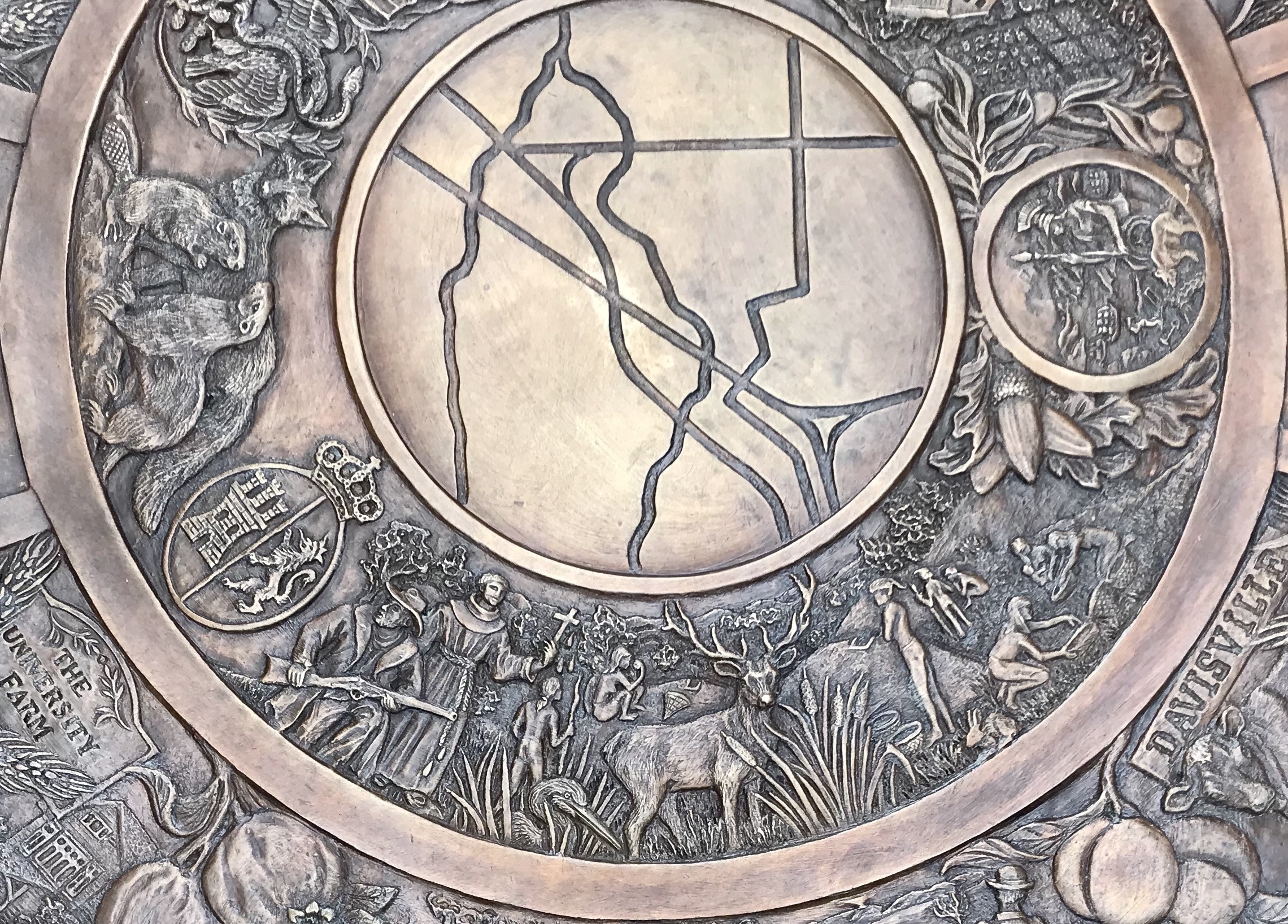 Imagery of the Inner Ring
Imagery of the Inner Ring
The Inner Ring surrounding the central image tells the story of the early history of our area. Proceeding in a clockwise direction:
• The native Patwin people, members of the Wintun Nation lived in harmony with nature in permanent villages of earth-covered domes established along Putah Creek.
• The arrival of the first Europeans, missionaries who forcibly removed indigenous inhabitants for Christianization, and hunters and trappers who came to the area as part of the California fur trade. These and other early settlers arrived during the Spanish and Mexican eras.
• The coat of arms of the Viceroyalty of New Spain, representing the era of Spanish sovereignty in California.
• Beaver, otter, and fox, native animals of the Putah Creek riparian habitat, and the targets of early trappers in California.